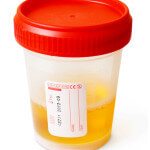 According to the Arkansas Business Journal, hair follicle drug testing kept more than 3,200 prospective drivers who tested positive for illegal drug use off the road.
According to the Arkansas Business Journal, hair follicle drug testing kept more than 3,200 prospective drivers who tested positive for illegal drug use off the road.
For some time, J.B. Hunt has used hair follicle testing, along with urinalysis, as part of the pre-employment screening process.
J.B. Hunt reported that since May 2006, 3,2210 prospective employees tested positive for illegal drug use, including cocaine, heroin and amphetamines. Of the 3,200 who failed the hair follicle tests, only 90 failed the urinalysis portion.
While the positive drug tests may have kept the drivers from entering a J.B. Hunt truck, they were likely able to move onto another driving job, at another company that does not employ the use of hair follicle testing.
“We deny them employment, but these people are likely driving a truck for somebody else,” said Greer Woodruff, vice president of safety and security at J.B. Hunt. “… People with positive hair tests obviously do not need to be behind the wheel. These are the kind of people we screen out, and we think if more companies could do hair testing and share the results, we could move these people off the roads and out of commercial vehicles. Or they could go through some type of rehabilitation program. Right now they’re just moving to a different company.”
Proponents of hair follicle testing say it’s much harder to cheat the test than it is to cheat a urinalysis, stating that all drug abusers have to do, in many cases, is abstain from drug use for as little as 24 hours. Not so with hair follicle testing.
“Follicle samples — usually collected by cutting or shaving an inch-and-a-half of hair — can detect drug use as far back as 90 days. Current methods of testing accepted by the DOT go back only about 48 hours,” the Arkansas Business Journal reported.
In December of 2012, Rep. Reid Ribble (R-Wisc.) introduced a bill that would require the U.S. Department of Transportation to create a pilot program to evaluate the use of hair testing for drugs.
Many advocacy groups, including the ATA, are also campaigning for the use of hair follicle testing, or at the very least, to allow companies that do employ the use of hair follicle testing, to share the results with other carriers.
“It makes no sense from a safety standpoint why federal agencies — which have said we must reduce accidents involving truck drivers — wouldn’t recognize the method of drug testing that is most accurate and shows longest-term use of drugs,” said Lane Kidd, president of the Arkansas Trucking Association, . “Trucking companies are not [only] interested in if you used drugs yesterday. They want to know if there’s a lifestyle of use.”
“Two areas where we can do better in fighting impaired driving are through the use of hair testing of regulated drivers to detect illegal drug use and in the creation of a clearinghouse to better track drivers’ drug and alcohol test results,” ATA President and CEO Bill Graves.Graves said.
